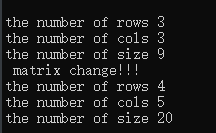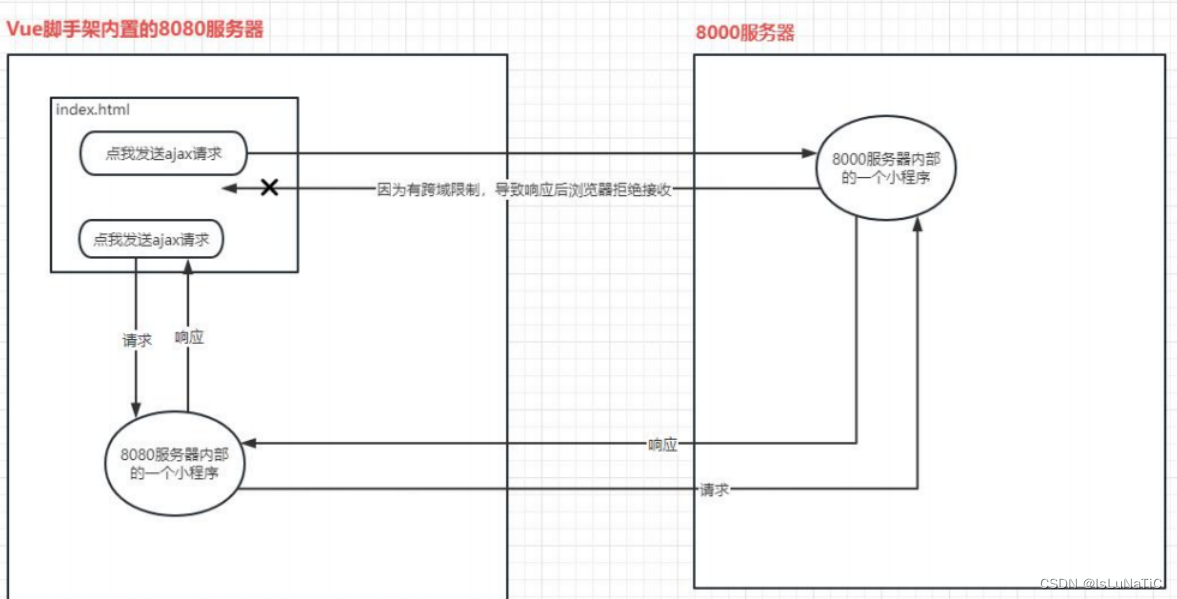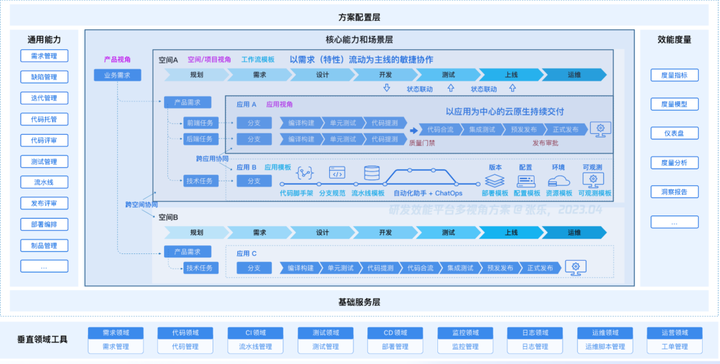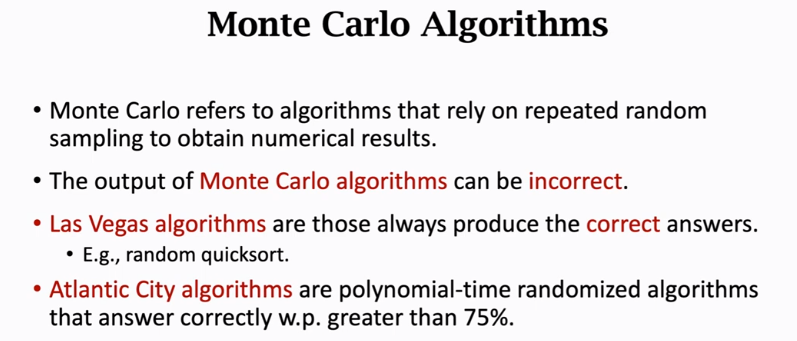
目录
1. 滑动窗口最大值 🌟🌟🌟
2. 用栈实现队列 🌟
3. 直线上最多的点数 🌟🌟🌟
🌟 每日一练刷题专栏 🌟
Golang每日一练 专栏
Python每日一练 专栏
C/C++每日一练 专栏
Java每日一练 专栏
1. 滑动窗口最大值
给你一个整数数组 nums,有一个大小为 k 的滑动窗口从数组的最左侧移动到数组的最右侧。你只可以看到在滑动窗口内的 k 个数字。滑动窗口每次只向右移动一位。
返回滑动窗口中的最大值。
示例 1:
输入:nums = [1,3,-1,-3,5,3,6,7], k = 3 输出:[3,3,5,5,6,7] 解释: 滑动窗口的位置 最大值 --------------- ----- [1 3 -1] -3 5 3 6 7 3 1 [3 -1 -3] 5 3 6 7 3 1 3 [-1 -3 5] 3 6 7 5 1 3 -1 [-3 5 3] 6 7 5 1 3 -1 -3 [5 3 6] 7 6 1 3 -1 -3 5 [3 6 7] 7
示例 2:
输入:nums = [1], k = 1 输出:[1]
示例 3:
输入:nums = [1,-1], k = 1 输出:[1,-1]
示例 4:
输入:nums = [9,11], k = 2 输出:[11]
示例 5:
输入:nums = [4,-2], k = 2 输出:[4]
提示:
1 <= nums.length <= 10^5-10^4 <= nums[i] <= 10^41 <= k <= nums.length
出处:
https://edu.csdn.net/practice/26377425
代码:
class Solution(object):
def maxSlidingWindow(self, nums, k):
"""
:type nums: List[int]
:type k: int
:rtype: List[int]
"""
if len(nums) == 0:
return []
if k == 1:
return nums
res = []
res.append(max(nums[:k]))
for i in range(1, len(nums) - k + 1):
m = max(nums[i : i + k])
res.append(m)
return res
if __name__ == '__main__':
s = Solution()
nums = [1,3,-1,-3,5,3,6,7]; k = 3
print(s.maxSlidingWindow(nums, k))
输出:
[3, 3, 5, 5, 6, 7]
2. 用栈实现队列
请你仅使用两个栈实现先入先出队列。队列应当支持一般队列支持的所有操作(push、pop、peek、empty):
实现 MyQueue 类:
void push(int x)将元素 x 推到队列的末尾int pop()从队列的开头移除并返回元素int peek()返回队列开头的元素boolean empty()如果队列为空,返回true;否则,返回false
说明:
- 你只能使用标准的栈操作 —— 也就是只有
push to top,peek/pop from top,size, 和is empty操作是合法的。 - 你所使用的语言也许不支持栈。你可以使用 list 或者 deque(双端队列)来模拟一个栈,只要是标准的栈操作即可。
进阶:
- 你能否实现每个操作均摊时间复杂度为
O(1)的队列?换句话说,执行n个操作的总时间复杂度为O(n),即使其中一个操作可能花费较长时间。
示例:
输入: ["MyQueue", "push", "push", "peek", "pop", "empty"] [[], [1], [2], [], [], []] 输出: [null, null, null, 1, 1, false] 解释: MyQueue myQueue = new MyQueue(); myQueue.push(1); // queue is: [1] myQueue.push(2); // queue is: [1, 2] (leftmost is front of the queue) myQueue.peek(); // return 1 myQueue.pop(); // return 1, queue is [2] myQueue.empty(); // return false
提示:
1 <= x <= 9- 最多调用
100次push、pop、peek和empty - 假设所有操作都是有效的 (例如,一个空的队列不会调用
pop或者peek操作)
出处:
https://edu.csdn.net/practice/26377426
代码:
class MyQueue:
def __init__(self):
"""
Initialize your data structure here.
"""
self.stack_push = []
self.stack_pop = []
def push(self, x: int) -> None:
"""
Push element x to the back of queue.
"""
while self.stack_pop:
self.stack_push.append(self.stack_pop.pop())
self.stack_push.append(x)
def pop(self) -> int:
"""
Removes the element from in front of queue and returns that element.
"""
if self.empty():
return None
else:
while self.stack_push:
self.stack_pop.append(self.stack_push.pop())
return self.stack_pop.pop()
def peek(self) -> int:
"""
Get the front element.
"""
if self.empty():
return None
elif not self.stack_pop:
return self.stack_push[0]
else:
return self.stack_pop[-1]
def empty(self) -> bool:
"""
Returns whether the queue is empty.
"""
return not (self.stack_push or self.stack_pop)
# Your MyQueue object will be instantiated and called as such:
# obj = MyQueue()
# obj.push(x)
# param_2 = obj.pop()
# param_3 = obj.peek()
# param_4 = obj.empty()
myQueue = MyQueue()
myQueue.push(1) # queue is: [1]
myQueue.push(2) # queue is: [1, 2] (leftmost is front of the queue)
print(myQueue.peek()) # return 1
print(myQueue.pop()) # return 1, queue is [2]
print(myQueue.empty()) # return false
输出:
1
1
False
3. 直线上最多的点数
给你一个数组 points ,其中 points[i] = [xi, yi] 表示 X-Y 平面上的一个点。求最多有多少个点在同一条直线上。
示例 1:
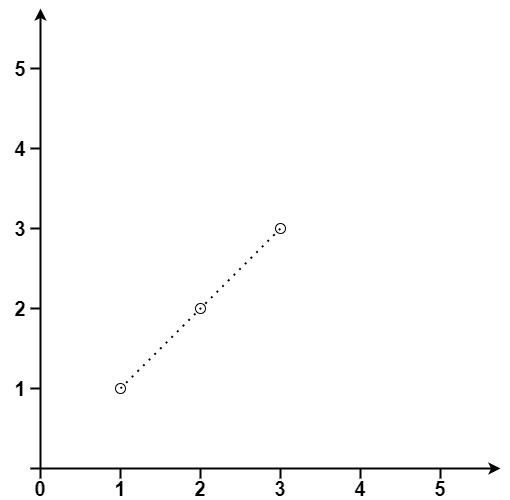
输入:points = [[1,1],[2,2],[3,3]] 输出:3
示例 2:
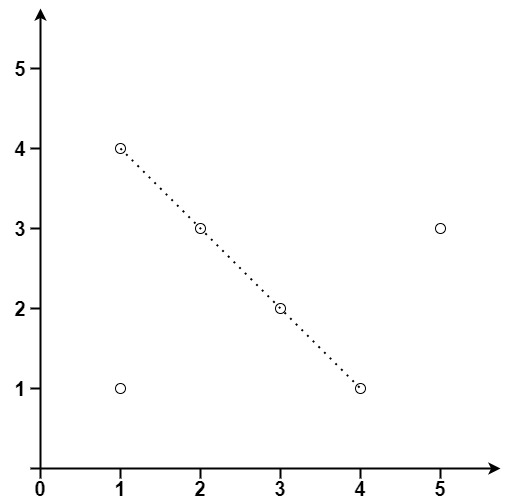
输入:points = [[1,1],[3,2],[5,3],[4,1],[2,3],[1,4]] 输出:4
提示:
1 <= points.length <= 300points[i].length == 2-104 <= xi, yi <= 104points中的所有点 互不相同
出处:
https://edu.csdn.net/practice/26377427
代码:
from typing import List
class Solution:
def maxPoints(self, points: List[List[int]]) -> int:
if len(points) <= 2:
return len(points)
maxNum = 0
for i in range(len(points)):
maxNum = max(maxNum, self.find(points[i], points[:i] + points[i + 1 :]))
return maxNum + 1
def find(self, point, pointList):
memories = {}
count = 0
inf = float("inf")
for curPoint in pointList:
if curPoint[1] == point[1] and curPoint[0] != point[0]:
memories[inf] = memories.get(inf, 0) + 1
elif curPoint[1] == point[1] and curPoint[0] == point[0]:
count += 1
else:
slope = (curPoint[0] - point[0]) / (curPoint[1] - point[1])
memories[slope] = memories.get(slope, 0) + 1
if memories:
return count + max(memories.values())
else:
return count
if __name__ == '__main__':
s = Solution()
null = None
points = [[1,1],[2,2],[3,3]]
print(s.maxPoints(points))
points = [[1,1],[3,2],[5,3],[4,1],[2,3],[1,4]]
print(s.maxPoints(points))
输出:
3
4
🌟 每日一练刷题专栏 🌟
✨ 持续,努力奋斗做强刷题搬运工!
👍 点赞,你的认可是我坚持的动力!
🌟 收藏,你的青睐是我努力的方向!
✎ 评论,你的意见是我进步的财富!
☸ 主页:https://hannyang.blog.csdn.net/
 | Golang每日一练 专栏 |
 | Python每日一练 专栏 |
 | C/C++每日一练 专栏 |
 | Java每日一练 专栏 |



